
English speakers use the term “belly dance” to describe solo, improvised dances from the Middle East and North Africa that feature intricate movements of the shoulders, chest, and hips.
Where Did the Name “Belly Dance” Come From?
It isn’t a direct translation of a Middle Eastern term. What we call “belly dance” is known as “Oriental” or “Eastern” dance in Arabic and Turkish (raqs sharqi and Oryantal dans, respectively).
It doesn’t accurately describe the dynamism of the dance style. Very few of the dance’s movements draw focus primarily to the abdomen.
And, more than a century ago when this dance first came to the attention of North American and European audiences, Middle Eastern dancers didn’t often perform in costumes that revealed their bellies.
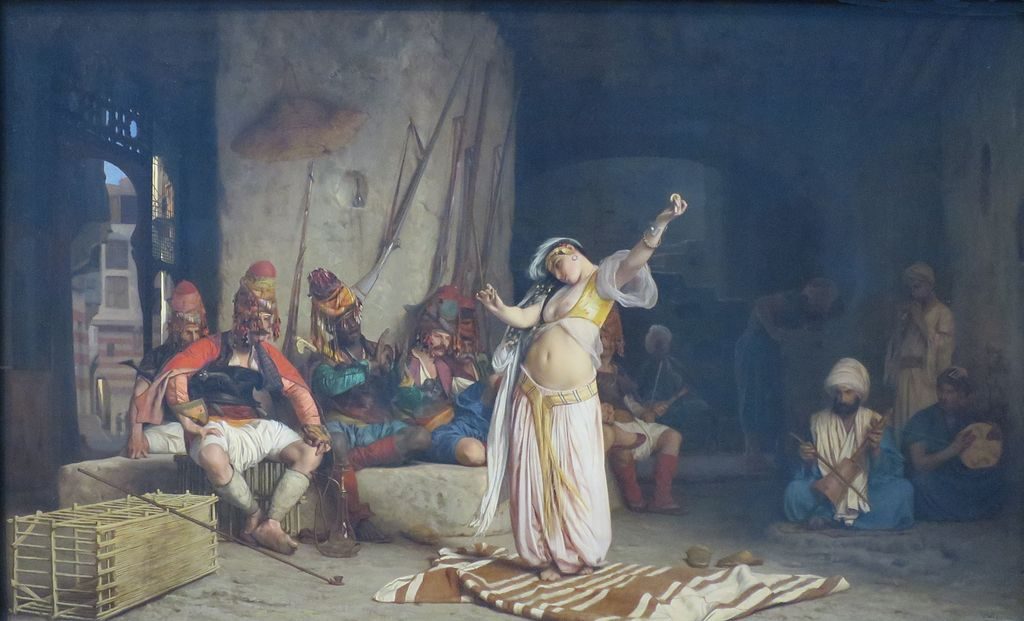
The Origin of the Term “Belly Dance”
Tracing the history of the term takes us back to 19th century France and the Salon of 1864, Paris’ annual art exhibition, where Orientalist artist Jean-Léon Gérôme’s painting La danse de l’almée ‘The Dance of the Almeh’ was displayed for the first time. Almée or “almeh” derives from the Arabic word ʿalma meaning “learned woman”, the term for professional singer-dancers in 19th-century Egypt.
On Gérôme’s canvas, in a stereotypically Near Eastern setting, a female dancer sways before an audience of seated soldiers. The dancer’s torso and arms are almost completely nude, clad only in a short gold vest open over bare breasts, a gauzy suggestion of a sleeve, and bracelets. She leans her upper body backward, arms extended and pelvis towards the audience.
The racy painting caused a sensation and scandalized art critics like Charles Asselineau, who published this dismissive review in May 1864:
“The head is inverted …, the arms are twisted, the hips are dislocated. The goal of all this writhing is to project to the forefront a nude and bloated belly, which is the centre and highlight of the painting. Don’t bother exhausting archaeological dictionaries; don’t go ask a scholar what this danse du ventre really was. Examine instead the ardent gaze of the spectators, their outstretched necks, their anxious attitudes.” (Translated from French)
Dance of the Belly
- Danseuse arabe (Almeh) by Gabriel Lekegian, ca. 1880, Egypt
- Performers of danse du ventre from the Exposition Universelle by Atelier Nadar, 1889, France
- Photograph of danse du ventre performers at the Chicago World’s Fair from The Magic City by James W. Buel, 1894, United States
The name La danse du ventre, meaning “The Dance of the Belly”, came to be widely used as an alternate title for Gérôme’s painting in the French press. From there, the term seems to have been adopted to refer to the dancing of almehs in general:
“One night, at the Folies-Bergère, Mr. Sari had the idea to show the Parisian public real almehs, authentic almehs, straight from Cairo, who danced the famous danse du ventre like in Gérôme’s painting.” (Translated from French, Le Temps, July 6, 1883)
When the Exposition Universelle opened in Paris in 1889, its Rue du Caire “Street in Cairo” exhibit made a worldwide splash, and newspapers across the globe raved about the danse du ventre performed there. In English-language media, “belly dance” was sometimes provided as a translation of the French, though the terms “stomach dance”, “abdominal dance”, and “ventral dance” were also used.
Belly Dance
The name “belly dance” didn’t come into its own until about 1950, when Egyptian dancer Samia Gamal became the break-out star of the king of Egypt’s birthday gala. Media coverage of Gamal widely referred to her performance as “belly dance”, even though Gamal herself called this a “rude term”. Dancers still struggle with the phrase’s negative connotations.
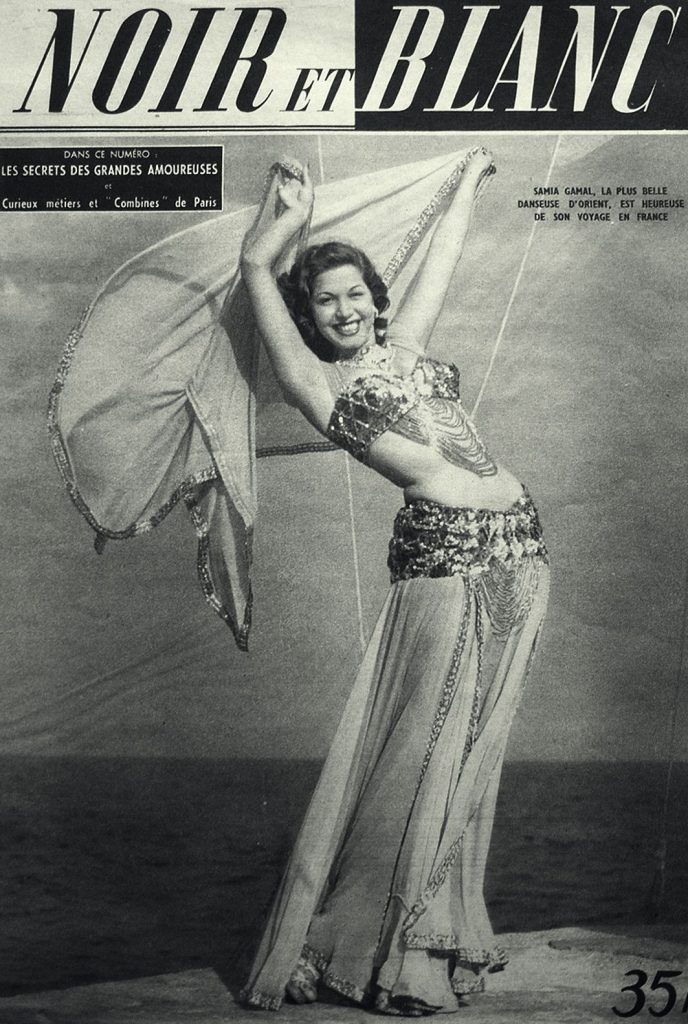
So, the historical evidence suggests that the phrase “belly dance” wasn’t inspired by the movements or costuming of actual Middle Eastern or North African dancers but instead began as a snide nickname for a French painting depicting a European fantasy of the Near East.
For an in-depth history of the terms danse du ventre and “belly dance”, with more quotations from 19th-century sources, read the article “Middle Eastern Dance and What We Call It”, published in the journal Dance Research, Volume 37.1.
Ainsley Hawthorn is an author and historian based in St. John’s, Newfoundland. She holds a Ph.D. in Near Eastern Languages and Civilizations from Yale University, and her research interests include Middle Eastern dance, Mesopotamian literature and religion, and the cultural history of the senses. Dr. Hawthorn also teaches and performs Middle Eastern and international folk dance, specializing in the dances of Egypt. Browse her personal website here: www.ainsleyhawthorn.com


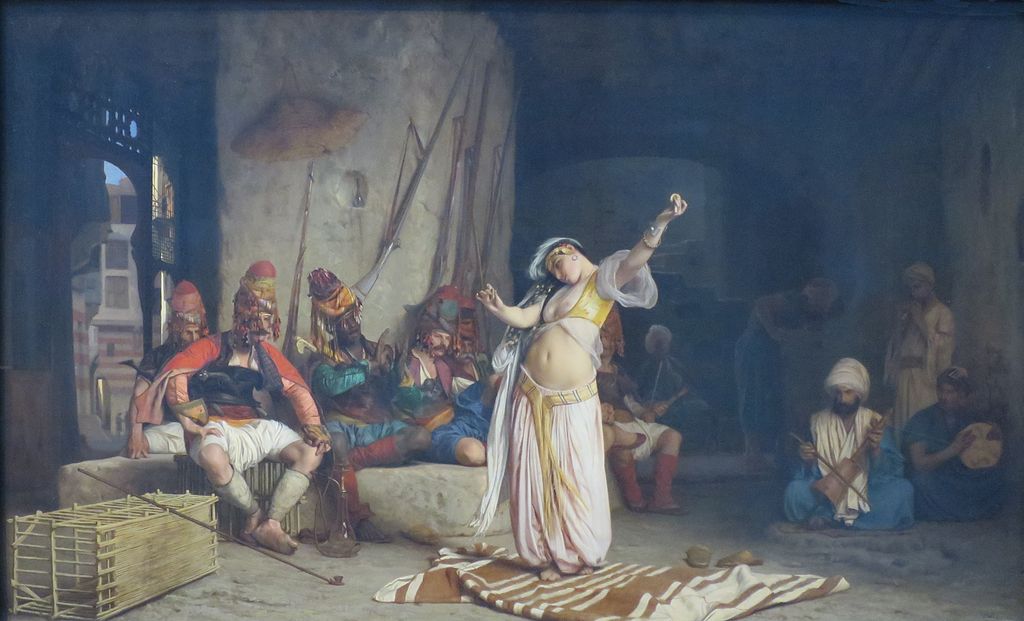
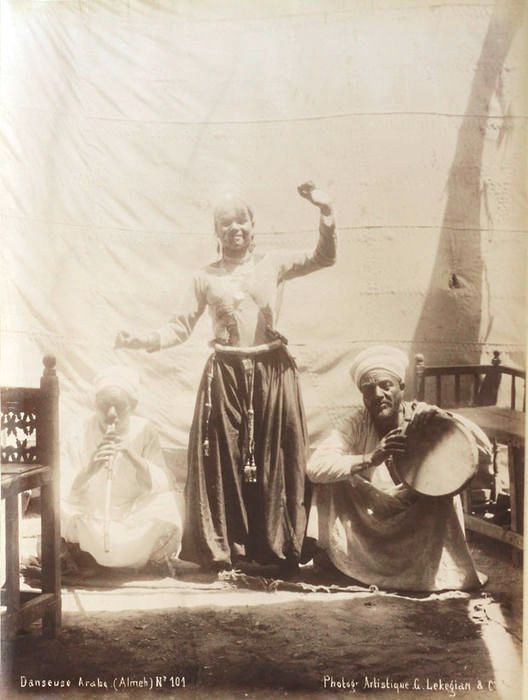
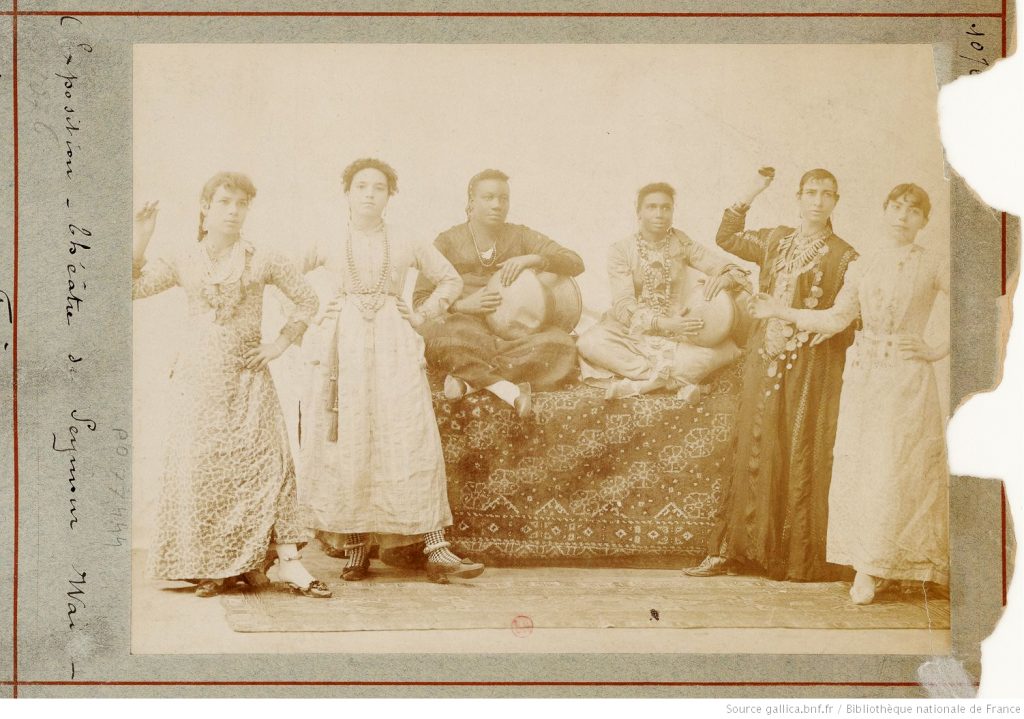
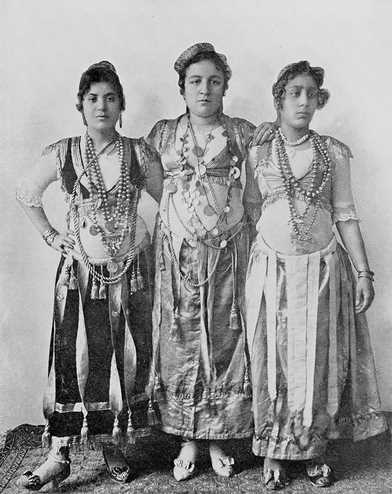



In 1964, l had the honor of learning the meaning & movements of belly dancing from Ibrahim (Bobby) Farrah. We were both young (l was 18), and living in Washington, DC. After 3 years of training, and a couple of belly dance clubs where we were employed; l performed single, & he performed with his female partner. He moved to New York City & opened up his dance studio. I followed & performed in clubs. We went on in life: he became world renowned and taught hundreds of girls & guys, published magazines & books. He revealed lots of knowledge of this beautiful ancient & spiritual dance. To watch him perform was a wonder as it seemed he had no bones as his movements were so fluent. He was a master at playing the zills (finger cymbals), and taught most all dancers. I went on in life to take the movements & talent he gave me to 47 states & 15 countries. So many cities & small towns, from Presidents, celebrities – in all fields, voted Airborne Queen 4 yrs. in a row, covers of magazines, newspaper articles, television appearances to sitting in the boxed area with Queen Elizabeth England at the Calgary Stampede, worked the world’s largest midway – Royal American Shows to Gallier Hall in N.O. My stage name was The Queen of Sheba & l performed until l was 55 & a storm named Katrina made it hard to continue a normal life. I met 1000’s of people, saw 1000’s of places & enjoyed countless happy times all because a talented man, with a beautiful mind, took time to make something out of a small town green horn from Selma, Alabama!
The art of Middle eastern dancing is a spiritual dance so l know what l will be doing in my “next” existence. “Thanks to Bobby.”
[…] women, but he also managed to hypersexualize integral elements of Middle Eastern culture, like belly dancing. I find it particularly frustrating how Middle Eastern women have to suffer stigmatization […]